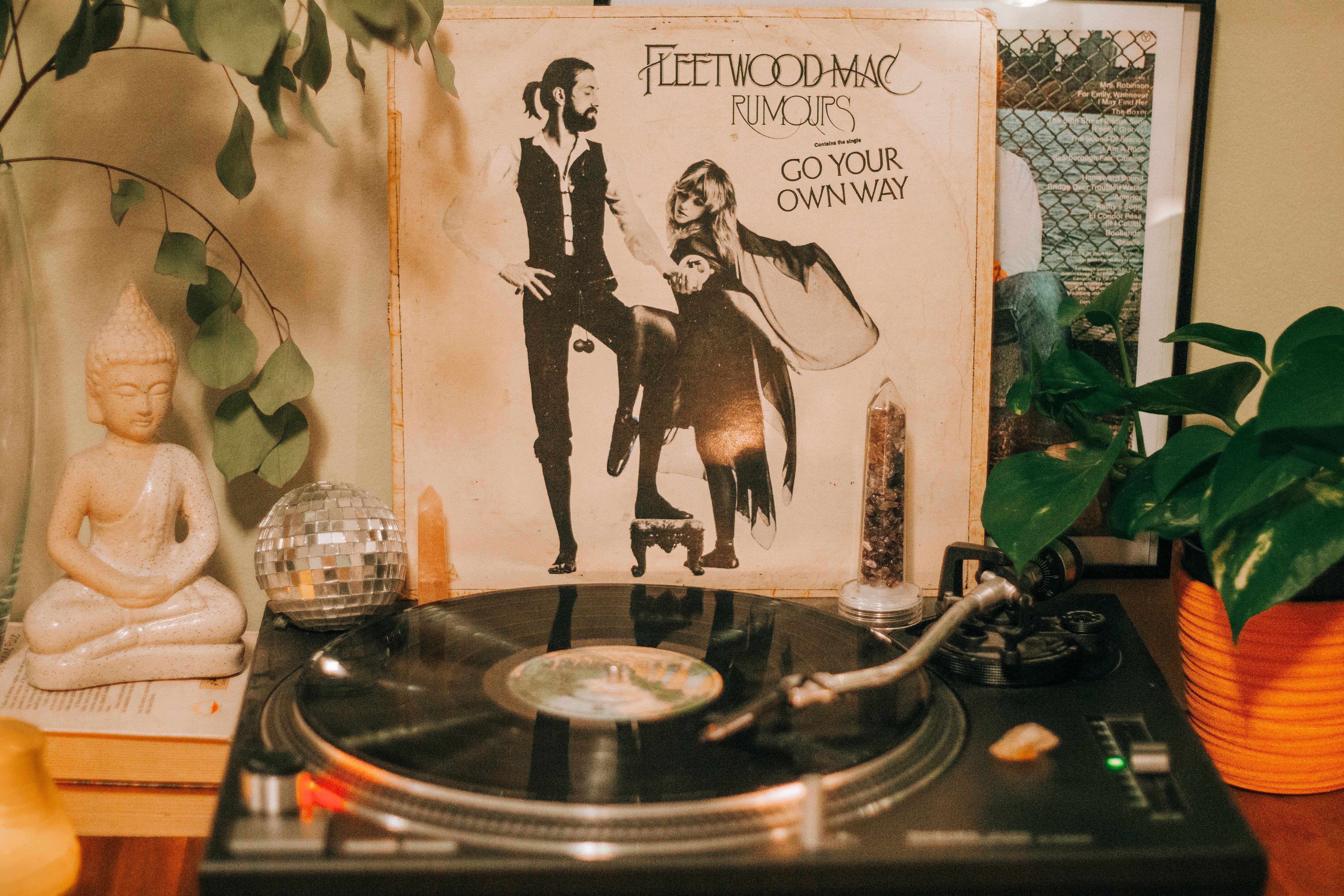
How Doo Wop Saved Me
Published on Nov 2, 2025
The 45s of My Youth: You Don't Have to Say You Love Me
Published on Oct 21, 2025
When Bad Albums Happen to Good People
Published on Oct 11, 2025
Fall Into Winter: songs for seasonal transition
Published on Oct 5, 2025
More Liner Notes…
Featured Essay: The Skip That Stuck: How a Damaged LP Became My Favorite Version
by Mary Wanjiru

I was seventeen when I bought a scratched record called Rumours by Fleetwood Mac, found in a dusty record bin at a thrift shop in Nairobi. It was not a collector’s dream; it was misshapen at the edges, the cover was discoloured, and the vinyl resembled vinyl whose owner had been run through a sandstorm. Yet, there was something in it which attracted me. Perhaps it was through the familiarity of the album, or I was just a teenager who needed something concrete and significant. I took it home and put a needle onto it and that was when something unusual started happening; a skip in the song “Dreams” which became something I could not shake off.
The skip was irritating me at first. The flow of the serene melody was abruptly stopped by a stutter in the voice of Stevie Nicks, who came just before the chorus. However, after several years, it was the one I was most familiar with. When I listen to a pristine copy, the song is wrong. I was inclined to refer to the old record over and over. That off-chance, unintended skip had found some way into my emotional memory. Rumours wasn’t any more, it was my version of Rumours.
This experience has further engraved in my mind that physical media, such as vinyl, contain the sound, scars, and tales of its trips. A mark of a record, a ripped record cover, a smeared label- we can disregard all this as damage. To some of us, they are incorporated into the music. It was not just a glitch that skipped. It was a break that my brain had looked out for, a break that had become routine. I would anticipate it, at least humming along with the disruption as though destined to be there.
Analog imperfection has some intimacy in it. In an e-world rendered spotless, endlessly reproducible, and condensed into unseeable data, vinyl resists. You get the pops, the static, the unevenness. And in the textures, you have emotion. This jump in “Dreams” is not the same leap as anyone’s, but my own. It is on that copy and only in my room on my small record player. When I listen to that album, I am not only listening to it but also interacting with a not-so-perfect but beloved memory.
Music streaming services that are so convenient cannot provide such a connection. A digital file does not warp, or jump, and does not smell of old cardboard and plastic. Streaming by all means is an access but seldom an attachment. You can go and listen to “Dreams” on Spotify, and it will always sound the same, whether you are in Canada, Britain, or Australia, and it will always sound the same on your laptop, cell phone, and stereo. But it won’t, my skip will not.
The more I grew up, the more records I could buy, some of which were in perfect mint condition, and some were in bad playing condition. However, even though those pressings were mastered, none of them could displace the imperfect perfection of that original Rumours album. Since then, I have purchased two improved album releases, one a 180-gram repress, the other a Japanese import. Both sound more pure, more right. But they are not as emotional. I go back to the one with the skip.
I suppose that is what nostalgia is all about; it is not only recalling the past, but mostly the sense of connectedness to how things used to feel. It is in the cracked sounds, the things that we did not repair, the imperfections that we did not rival, that the stories are told. And then, when it comes to music, those tales are repeated.
What baffled me the most was that the skip changed my memory of the song. Whenever I hear “Dreams” at any other place - on the radio, at a party, in a film - I still expect the time when the record would stutter. When it fails to come, I feel oddly uprooted. I am mentally carried away, not to the song lyrics, but the scene I still remember vividly when the tune of such an old record reverberated in my small room and into my heart, as a teenager.
This is not only about an album or a song. It is an issue of how analog artifacts, such as vinyl, are the means that provide us with the means of personalizing the music and internalizing it. They make us aware of the fact that listening is an experience. You can be taken back into some corner of your history by the sound of an old scratchy record that nothing clean and digital could ever do. Music does not always have to be faultless. In some sense, the magic is in the mistakes that we come to love.
I have been of the opinion that these defects improve our emotional affiliation with music over the years. As long as we embrace a defect and make it part of our experience, it becomes a symbol. That jump symbolizes youth, loneliness, curiosity, and possibly even pain. Most of all, it is ownership. It is not ownership as a court of law, but as emotion. It was not the music I listened to, but the music I have lived.
I have friends who discard scratched records. They desire pure, infidelity, and ideal listening. And that is all right. But I am not that kind of listener. I want to experience the object’s existence, the time’s vestige. I wish to recall the person I am when I placed that needle, and Stevie Nicks’ voice was caught a second too long.
That record is still among the top records in my collection even today. I use an old sleeve since the original was torn years ago. I still play it, mainly in the afternoons on rainy days with low lights, and each time the needle goes on that jump, I grin- not that the music is spoiled, but that my memory is not.
I have always wanted to see the difference if I got to digitally restore that version of the song. Is it possible for me to edit the audio and cut out the skip? Sure. Nevertheless, I will not. By so doing, I would destroy something much more valuable than a temporary malfunction. I would destroy the emotion, which, in the first place, led me to fall in love with vinyl.
So, yes, the skipper stuck. And in one mysterious, lovely fashion, it made the music my own.
Mary Wanjiru is a Kenyan author and storyteller passionate about memory, music and little moments that make us who we are. She spends her time in her older vinyl record search, hand journaling, and long morning moods with a cup of strong tea when she is not writing. Her art investigates the connections in nostalgia, sound, and identity. This is her maiden contribution to I Have That On Vinyl.

